Review: Review: Nokia E72 - part 1: the E71 upgrade, a Solid Smartphone
Nokia's latest iteration of the candybar-QWERTY form factor goes under Steve Litchfield's review hammer - how does it fare as we approach 2010? Here's part 1 of a 2 part review.
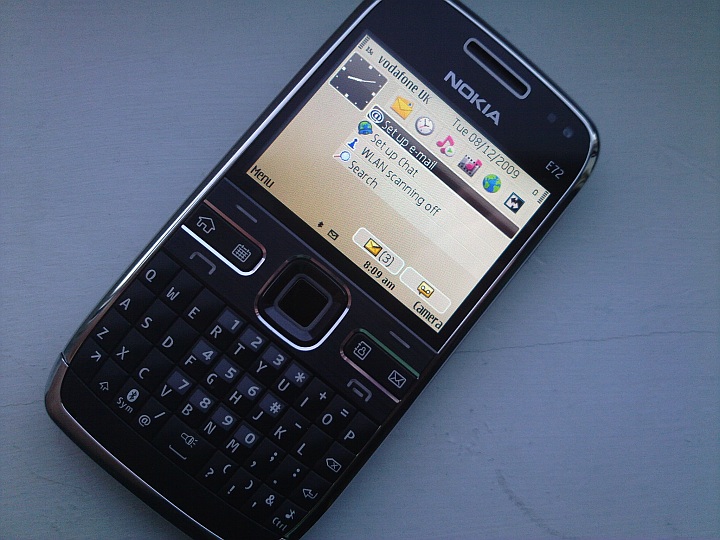
From Nokia E71 to E72... and Beyond
There's a temptation, writing this late in 2009, to dismiss any smartphone with a mere 2.4" QVGA screen. And, in the general case, you'd be right to do so - the iPhone and the many models from all manufacturers that followed it have shown significant benefit in larger screens and (seemingly) new uses for our humble smartphones. A 4" screen on a phone is now not considered outrageous.
However, the Nokia E72 (and the E71 and E61i before it) belong to a specific class of smartphone - the keyboard-centric 'Blackberry'-style candybar, where instant access to QWERTY and speed of interface are paramount. Never mind watching videos or even browsing the 'net' - what's important here is rock solid telephony and rock solid messaging.
Tellingly, Nokia's plans for the next few years were revealed at their annual Capital Markets Day last week and, looking at the pie charts, I was somewhat astounded to see that their 'QWERTY only' range was actually planned to expand in the next couple of years - it looks like the E72 form factor (and perhaps that of the E75) isn't going away anytime soon - this is a firm favourite with companies and Nokia are happy to keep refining the concept.
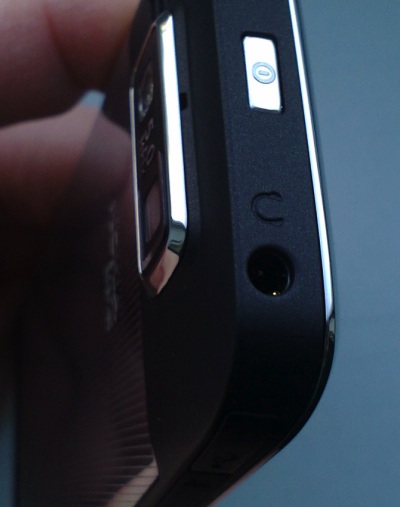 And it's hard to argue with either the E71 or E72 - what seems to be too small and miniaturised on the spec sheet comes across far more as 'perfectly formed' when you hold it in the hand. For once, the nomenclature similarity is accurate - the E72 is very much an iteration on the E71, with the main changes being (relative to the older model):
And it's hard to argue with either the E71 or E72 - what seems to be too small and miniaturised on the spec sheet comes across far more as 'perfectly formed' when you hold it in the hand. For once, the nomenclature similarity is accurate - the E72 is very much an iteration on the E71, with the main changes being (relative to the older model):
- A 5 megapixel camera (cf 3mp), with VGA video capture at 15fps (cf QVGA) - initial results look good for an Eseries device
- An extra two keys on the qwerty keyboard, providing extra characters and also a 'Torch' option (press and hold space bar for four seconds on the homescreen)
- Processor speed raised to 600MHz (cf 350MHz)
- An Optical trackpad in the centre of the d-pad (with variable results - see below!)
- A 3.5mm audio out jack (cf 2.5mm, shown right, great to see the industry standard here on this form factor)
- Larger mono speaker, with reasonable quality for a phone
- Digital compass (used when zoomed right in, in Ovi Maps)
- Accelerometer
- microUSB charging (as well as 2mm charging)
- Active noise cancellation for calls
- Around 180MB more free flash memory on disk C
- High speed USB
That's a pretty decent hardware upgrade by anyone's reckoning. And there are software changes too:
- S60 3rd Edition Feature Pack 2, bringing User Data Preservation, Over The Air firmware updates, Destinations (intelligent access point degradation), wider media compatibility and a lot more
- Ovi Maps 3.1 and Ovi Store client out of the box
- Voice Music Search
- The (previously Nseries-only) updated Photos app.
- Quickoffice Premier 5.3 out of the box (free update to v6.0 Premier for all, of course, though)
Most of the software items above can be retrofitted easily to an E71, of course. Rather inexplicably, there have been some omissions in the software package, too, so its not all good news. There's no geotagging in the camera, but this is likely to appear in short order in a firmware update. There's no Internet radio, arguably a niche application for many - but you can install the version for the 6120 Classic and this works fine.
The most serious omission is that of Podcasting - if you've never got 'into' listening to podcasts then you'll not understand the shock to someone who regularly subscribes to audio podcasts and then has them automatically downloaded, ready for whiling away boring journeys. I'm a podcast addict and I can see absolutely no reason why Podcasting was omitted from the S60 app set in the Nokia E72. There's a tenuous product differentiation argument - business users don't need to download podcasts - but then why are Nokia Music store and Music search included, both distinctly consumer-centric applications?
I live in hope that the E72 product team will see sense and re-introduce Podcasting, but in the meantime there's Escarpod, a slightly quirky and somewhat beta-status third party Podcasting client - it requires a heap more babysitting than Podcasting, but it will have to do.
Taken overall though, the E72 is a significant step forward from the ageing E71. Even under the hood improvements like the dual-plus of having User Data Preservation keep user data and settings through an Over The Air firmware update make a huge difference to the average user and take the E72 further away from geek territory towards the man in the street.
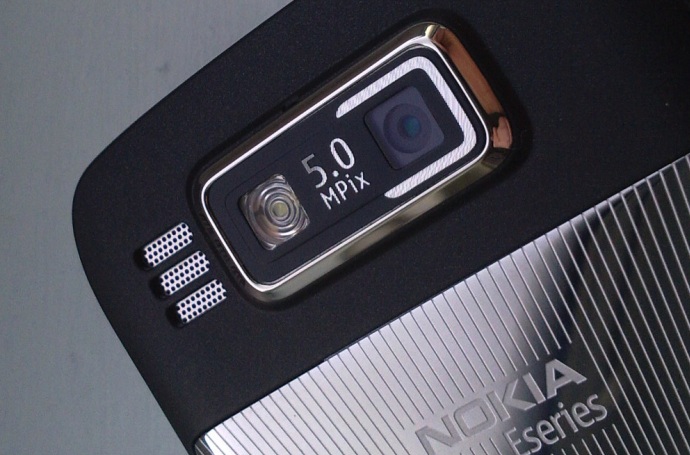
A solid smartphone
There's no doubting the E72 as a solid unit - unlike its stablemates the E52 and E55, seemingly from a different design school, despite the similarities in release timing, the E72 is just as solid as the E71 before it. Within the design constraints imposed by the qwerty candybar form factor, meaning a smallish screen and miniaturised keys, the E72 is not only useable, it's genuinely desirable. A large stainless steel battery cover, a chromed outer ring and metal detailing on the control icons give the E72 a quality feel in the hand. My only complaint is that the battery cover's corners could fit better against the plastic body - the amount of 'give' is quite small but possibly annoying, depending on where you place your fingers to brace yourself for typing.
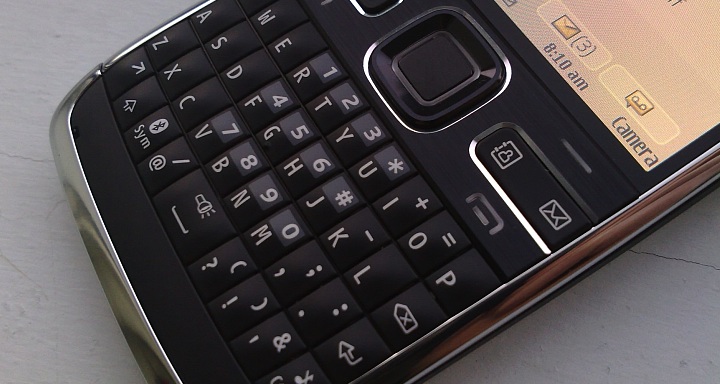
As with the E63, slimming the space bar down to just double width doesn't make a huge difference in usability, thankfully, and the extra character options are most welcome. As is the torch shortcut, which I use every night for treks to the garage in the UK winter. The Home/Calendar and Contacts/Email blocks are nicely raised and I had no difficulty with any of these functions.
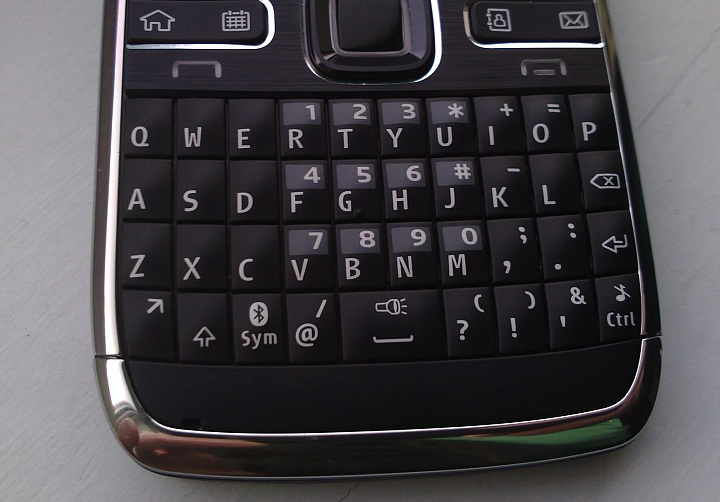
The most controversial design element is the inclusion of an "Optical Navi key" - positioned inside the d-pad perimeter, the idea is that you move your thumb over it to indicate directional movement to the OS (you may remember that Samsung did something similar with the INNOV8). Demonstrating this working fairly well is easy - just bring up a Web page and the cursor happily follows your thumb's flicking movements in satisfactory 'analogue' style. But the problem is that, although thumb movement on the pad does have an effect in other applications (usually mimicking a press on the appropriate d-pad direction), using the optical navi key is usually slower than using the d-pad's edges in time-honoured 'click at a time' mode. Raising the Navi key's sensitivity to 'High' in Settings does help a little, letting you swipe through several list entries/Calendar days/App icons at a time, and there is a certain novelty factor at work here, but if I'm honest it doesn't really add much to the E72 experience. Still, it's good to have the choice, it's easy to turn off and the standard d-pad mechanics are still very good, so I'm reluctant to be too critical here.
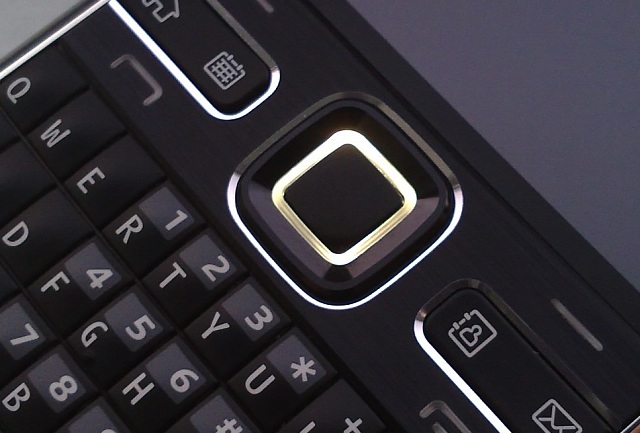
In fact, the Navi key is used in one more significant place - the E72's Camera. But I'll leave this for the second (and final) part of this review.
The microUSB and microSD jack/slot are both protected by a tight-fitting, tethered cover, nice quality control here, Nokia, while the 3.5mm audio jack (hooray) is rightly positioned on the top of the phone, for easy access when in a pocket. There's a 2mm charging socket on the bottom of the E72, but having the flexibility to charge via microUSB as well means that, like the E75 before it, this really is a smartphone to take anywhere and be sure of a top-up charge.
And Nokia do like playing up the backwards compatibility of their hardware to companies - yet again the superb 1500mAh BP-4L is used, so you can swap batteries between the vast majority of Eseries smartphones at will - very handy. 1500mAh should be enough to see the E72 through a couple of days of heavy use - something you couldn't claim with many other smartphones on the market today.
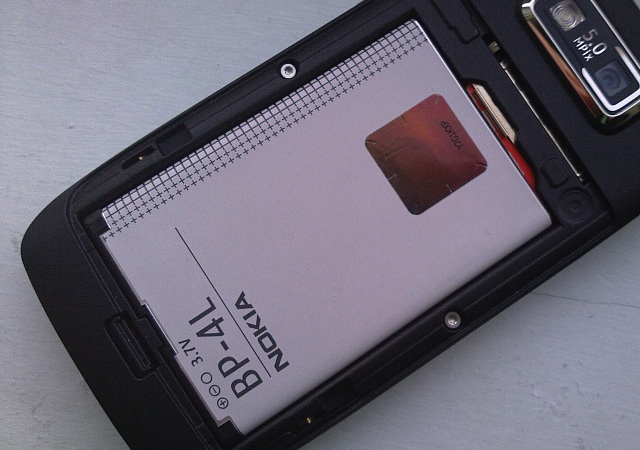
Under the hood, as noted above, the E72 now has a 600MHz processor - absolute speed isn't everything, of course, when we're talking about mobile OS and a mobile's components/bottlenecks, but it's fair to say that the E72 whizzes along: it boots in well under 30 seconds, Maps launches in 3 seconds, Photos launches in around 1 second, and All About Symbian's front page downloads and renders in five seconds flat (including ads, on Wi-Fi). Impressive. Also impressive is the amount of free flash memory for disk C - around 270MB, the best part of 200MB more than on the E71. I suspect an extra 256MB is present in hardware but that 70MB or so extra is needed to fit on S60 3rd Edition Feature Pack 2 (the E71 had FP1). Free RAM is hit harder by the switch to FP2, but there's still 45MB free after booting. Not a huge amount for a nHD-screened, multimedia-heavy touch phone like the N97 but sufficient for almost all needs here on the QVGA-screened E72.
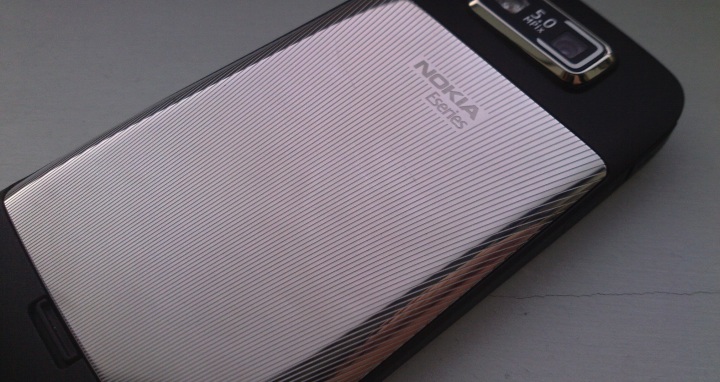
More on how well the E72 bears up in all departments in part 2!
Steve Litchfield, All About Symbian, 8 Dec 2009
Reviewed by Steve Litchfield at
